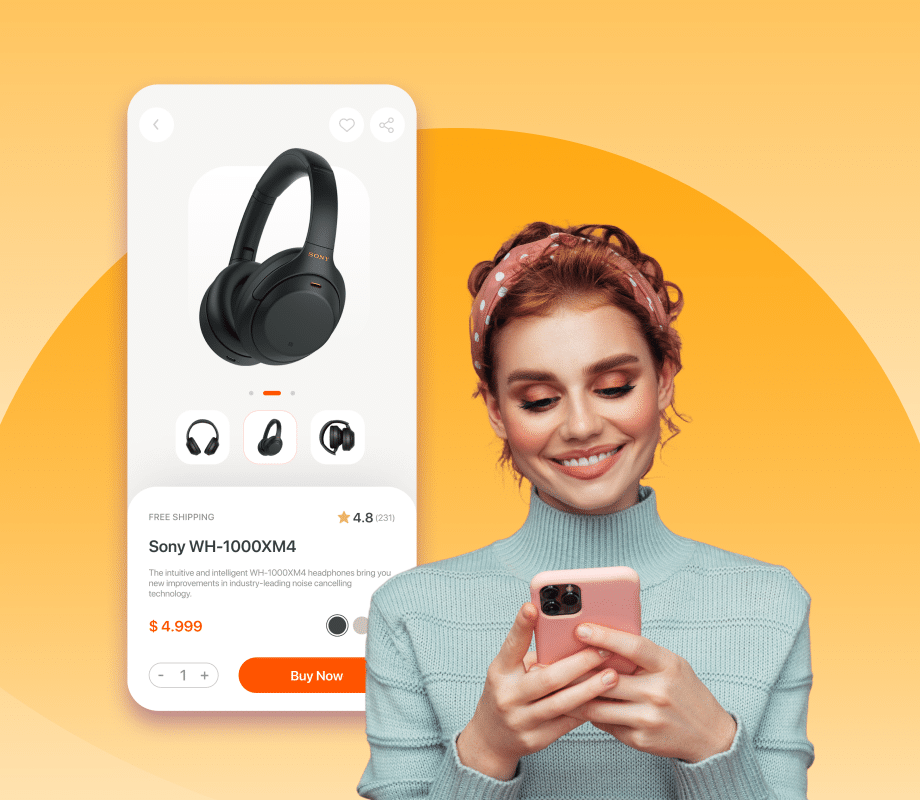This question is more relevant than ever in the world of Digital Retail. While one would want to lean towards a yes, the answer isn’t that simple.
Retailers are building their digital programs around a Customer Data Platform or CDP. The utopian goal is to centralize all customer interactions (read browsing patterns and transactions) in one system. Doing so would solve all problems that arise as a result of siloed information.
The end state was clear – if I can unify all my customer data and glean insights from it, then orchestrating individualized marketing engagement becomes a simple task.
Reportedly, 88% of marketing teams are expected to invest in data-driven decisions, and they all seem to be betting on a CDP solution. With the CDP market growing rapidly at a CAGR expected at 34.6% until 2026, it’s no wonder that retail businesses are focused on getting CDP to solve their marketing teams’ data problem.
However, the reality is very different. Most senior leaders acknowledge the journey had the right intent, but the execution ended up falling short on the promises made. The reason was not a technical one. It was in clearly identifying the data strategy, the user stories it would influence, and last but not the least, executing on the outcomes of a CDP.
Most CDPs excel at providing insights into segments and near real-time granular segments. Where they fail is to provide an easy way to operationalize those segments to drive business results.
So, where does the road take us? Well, it starts with asking the following questions:
- Will you drive the expected revenue lifts from the exercise?
- Will you improve the LTV of your clients?
- Will you be servicing the right segments?
Now let’s dive a little deeper into the items above to better understand the ‘how’.
How to Drive Revenue Lifts from a CDP
User stories? User stories? At risk of channeling my inner Jim Mora, they start and end with the personas defined by your journey mapping exercise (if you haven’t done one, I suggest you look at one) and the use cases for those personas – your highest LTV clients, your churn customers, your infrequent but steady customers, your advocates, etc.
Chalking out the key use cases that drive LTV allows you to concretize the actions and set goals for the organization. It also allows you to figure out gaps in your tech stack.
Yes, householding and identity resolution are needed. Now how are you leveraging them to build real-time dynamic segments? Is there a gap between creating those segments in your retail customer data platform and delivering that experience online?
Well-written user stories allow you to follow the North Start and thus focus on what’s important.
How Do I Improve LTV?
Let’s begin with ‘Easier said than done’ – however, it’s been proven: start with best practices on conversions. Here is where AI plays a pivotal role in figuring out HOW to improve conversions.
Use pre-built models that use the individual’s past behavior (read browse and buy) and wisdom of crowds layered on top of one another to make real-time recommendations. On average, our clients have seen 3–4% uplifts on strategic locations.
Then turn your attention to email. Is your current stack really impacting CTR? Chances are emails are not individualized. Test, repeat, and get better at new strategies. Work with your segmentation team to improve. Retailers are now spending more on Data Science than ever before. Leverage the ability to test and improve.
Are You Spending Your Energy on the Right Segments?
Modern day CDPs allow you to play around with all kinds of segmentation rules. Love it. Now, how do we monetize that ability?
Implementing a CDP solution is not going to solve a business problem. Actionable goals do. Activation simply provides other systems the ability to leverage segments and perhaps orchestrate campaigns through the CDP capabilities. These are limited and not truly cross channel. So what gives?
Focus on stitching the segment definition to the execution. Go back to the use cases for the personas and see which ones have previously driven the best revenue/margin/KPI de jour and then align your campaign, content, and goals to those segments. Personas are too high level. Have three sub-categories under personas and listen to what the engine recommends. That data doesn’t lie!
In summary, having a broader personalization strategy allows better alignment of actions and technology to the well-defined user stories. Don’t hastily invest in tech. Rather, invest in a data strategy that drives individualized behaviors. Look for a solution that fills the gap rather than just buy a CDP and then figure out how to address the gaps.
Read this comprehensive guide to CDP to learn more about the technology and how to make it work for your business.
 in Sweden from 7 - 8 October 2025. Pre-book a meeting to connect with our
product experts.
in Sweden from 7 - 8 October 2025. Pre-book a meeting to connect with our
product experts.










